First Day Covers:
A desired non-philatelic item!
Collectors of these letters are strange people! They pay for a stamp (intended for sending post), but they prefer envelops without address, which thus have not been used (read: delivered). If FDC's have been delivered, they must carry an address and often they have been over-franked. To prove that they have really been delivered by the post, they must be sent registered, which requires even more extra franking.
In the early philately people were searching for the first use of certain stamps. In the 19th century stamps were used from the first day that these paper receipts were present at the post office. This triggered a battle amongst collectors to own the first known date of use on a used stamp. In the Netherlands it is a game to discover the first used postcard, issued on January 1st 1871.
Some traders saw that this battle would pay bread, and started to get letters canceled
on the first day of use, and kept them in stock to sell them on a later moment with a substantial profit. Soon the "first day of use" cancellation also got popular on stamps, and traders started to decorate their envelops and to put their own name and logo's on the covers. After a while the post organizations also saw profit in this way of working, and co-operated by enabling a special cancellation for every new issue. After all it was almost sure that theses canceled stamps brought money into the (at that time still state's) pockets without having to deliver any service for it.
In some countries First Day Cancellations were, and still are, put on every post item that is offered, and from these countries a wide variety of illustrated FDC's is thus possible. An example is France:
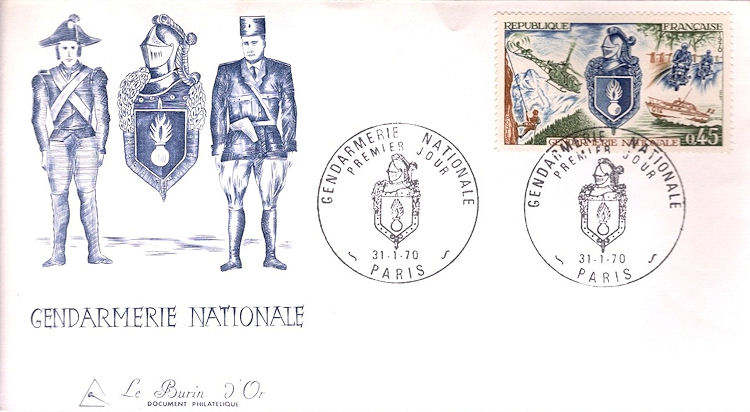
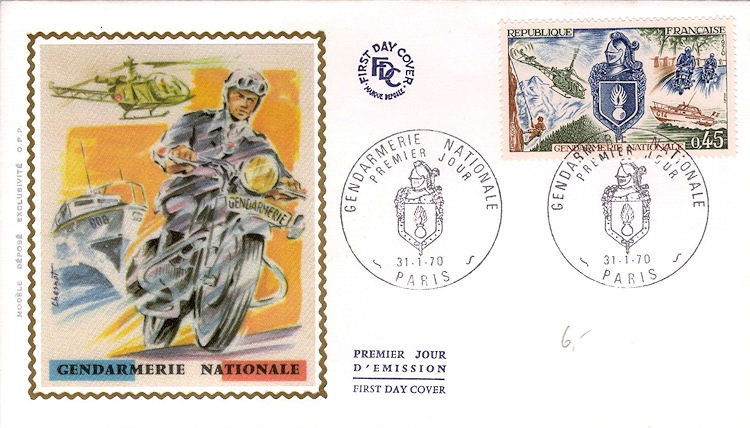
In several countries the Post organization reserves the right on cancellation with the special 1st day postmark for envelops made by themselves, but sometimes these rights are also given away or sold.
In the United States FDC's were already made around 1920. In the Netherlands first day cancellations were only put on envelops made by the NVPH (Dutch Association of Stamp Traders), and the first FDC is from the summer stamps of 1950 (May 2nd, catalog number E1-A).
The image on envelops that have been made in large numbers, all with the same image, is called chacet (in Dutch "vignet"), and privately made decorations
are called illustrations.
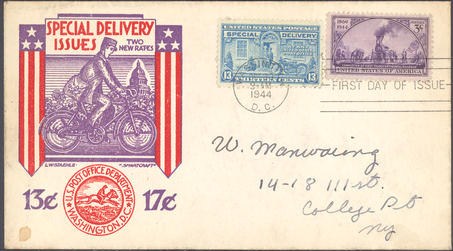
Example of a cachet
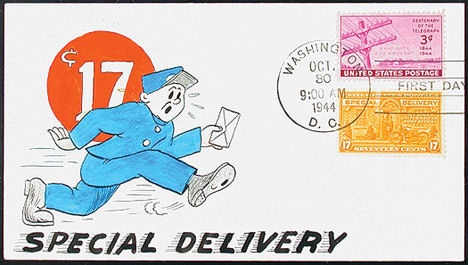
Example of an illustration
Another activity is to slightly modify the first day products issued by organizations, companies and authorities, like afterwards colouring of cachets. One of the most famous traders who put this in practice was the New York based Overseas Mailers Ltd. Owner John Barnard Leach arranged First Day Covers for many countries and states between 1950 and 1976. On the FDC's that he sold himself from his shop, he always put only 1 of the stamps from the issued series, and next to that a postmark with a related image on the official envelops.
There are more makers who use this method, and we specially know the China-Taiwan and Hong-Kong envelops with additional motorcycle postmarks. In the USA there is even a separate collectors club for these wanted FDC's, and for some covers high prices are paid.
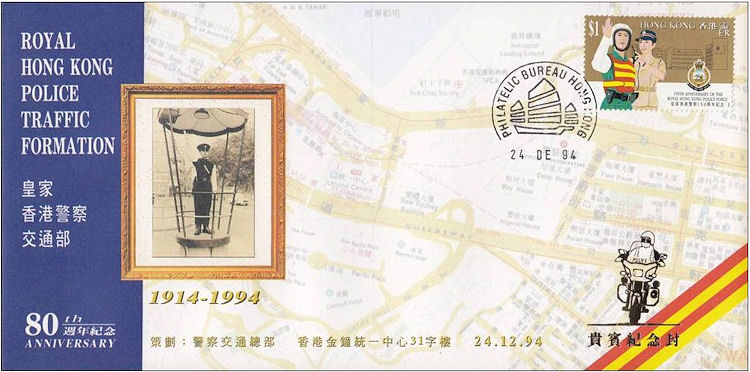
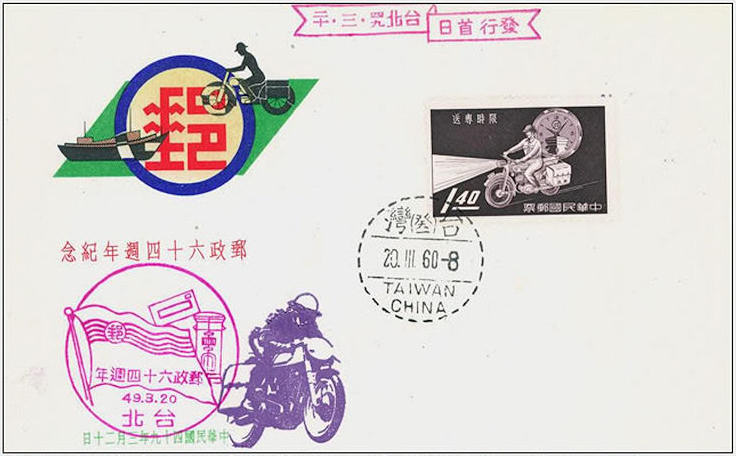
Overseas Mailers envelop from Taiwan
In the USA collecting of letters with company names, so-called "commercial covers", is much more popular than in Europe, and there are even clubs of cachet makers for this kind of letters and FDC's. See for instance on internet http://cachetmakers.org.
Another kind of FDC is formed by first day covers provided with a coin in FdC, Fleur de Coin. In the Netherlands these are called "Muntbrieven" (Coin letters). In our theme it is mainly Isle Of Man Post who offers this kind of items. On the envelop is a coin that has never been toughed by human hands, and thus is completely free of damage. These FdC-FDC's are also available with bank-notes.
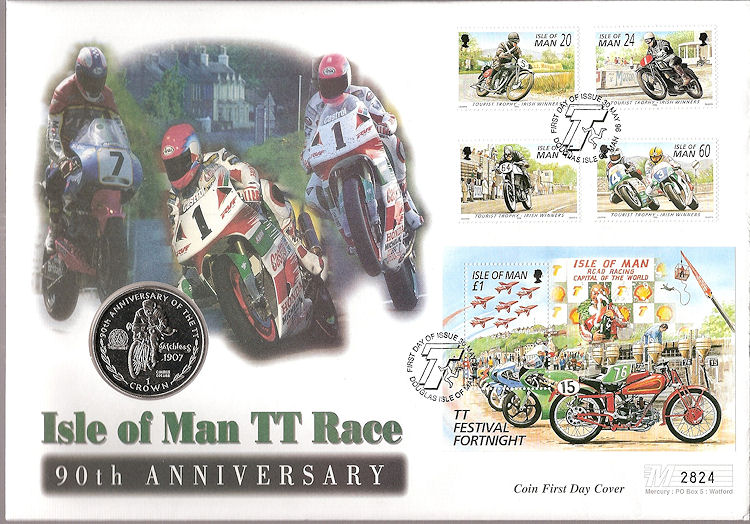
FDC with coin
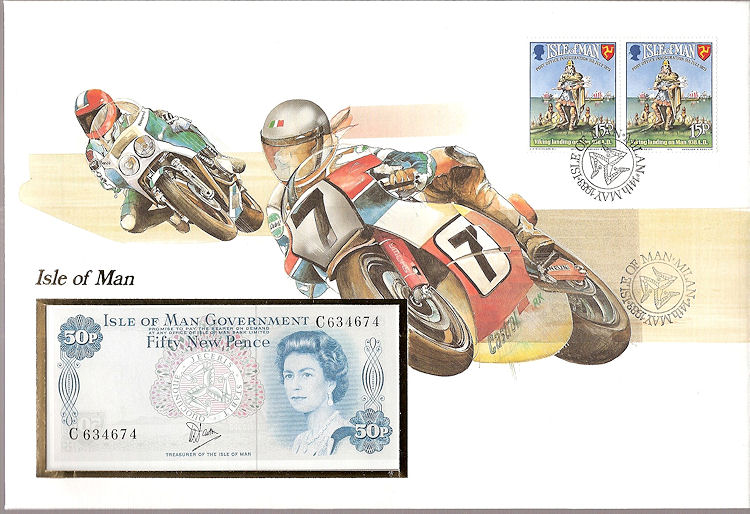
FDC with bank-note
Although FDC's are not philatelic (as they are mostly not delivered), FDC's still have some additional value for interested persons. The cachet often gives more room for a larger image, and often extra information on the image on the stamp or the aim of the issue is given on the back side of the envelop or on an additional card. And off course you can also just like them, in the end we are having a hobby for fun.
With all those personalized stamps nowadays, it is off course not possible to register all the dates of first use. The NVPH only makes FDC's for the first day of issue of new cadres (frameworks) for personalized stamps. For each image on personally made stamps only FDU's (First Day of Use) are thus possible.
To prepare FDC's for the day of issue, traders got permission to obtain stamps before the actual day of issue. As not every trader is bona fide it happened more than once that stamps were sent earlier on letters, to create a more valuable item. This made that with our southern neighbours, the Belgians, an early cancellation was enabled. Traders and citizens can get stamps a few days in advance to prepare FDC's. Unnecessary to say that this possibility is used so often, that even special postmarks are made for this possibility. For instance the first day of issue of the series Old Motorcycles is September 25th 1995, but at the 23rd of this month early cancellations could already be obtained at different places, and this makes September 23rd the date of issue for the catalogues.
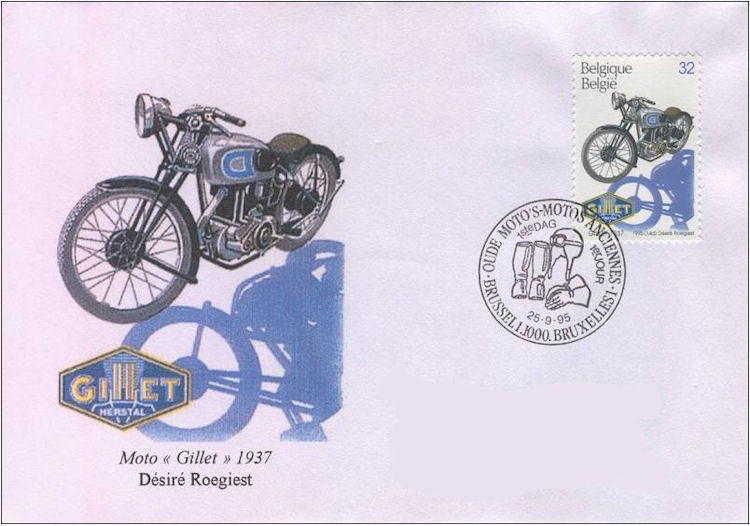
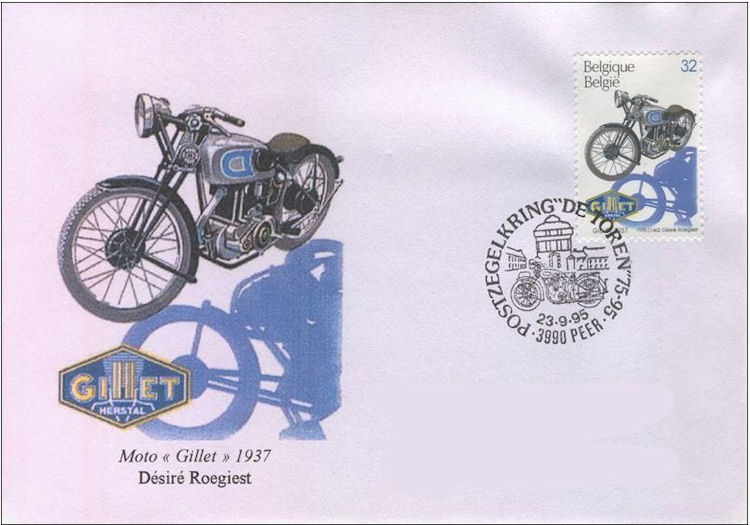
Other countries have chosen a different solution, and in Austria and Germany the date of issue can be obtained on letters until not less than 8 weeks after the actual day.
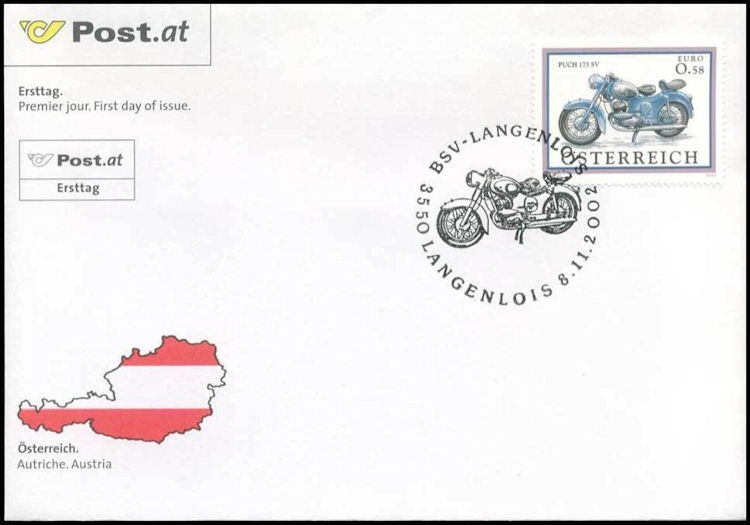
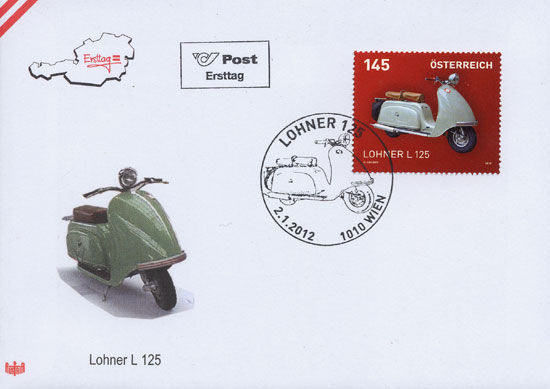
Not everything that can be told about collecting FDC's has been discussed here, but I hope that I have shown you that such a non-philatelic item can still be very interesting.
Hans de Kloet
Top - Back to former page - Home |











